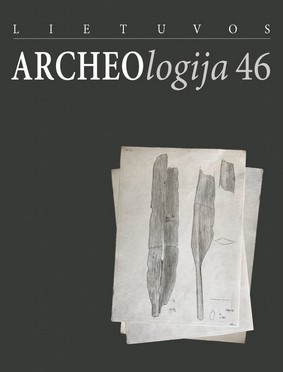CHARACTERIZATION OF TERTIARY FLINTS BY GEOCHEMISTRY: APPLICATION TO THE FRENCH TERRITORY
CHARACTERIZATION OF TERTIARY FLINTS BY GEOCHEMISTRY: APPLICATION TO THE FRENCH TERRITORY
Author(s): FRÉDÉRIC SURMELYSubject(s): Archaeology, Cultural history, Historical Geography, Environmental Geography, Ancient World
Published by: Lietuvos istorijos institutas
Keywords: Flint raw materials; Palaeolithic age; Magdalenian; Raw materials; Geochemistry;
Summary/Abstract: In present-day France, tertiary flints have played an important part in the supply of prehistoric populations, due to their abundance, quality and presence in areas without marine flint. From the Upper Paleolithic until the end of the use of flint, they were transported over far distances, especially in the center of the Central Massif. In this article the geochemical method is preferred for attributing of precise geographical origin to an archaeological artifact. To form the geological repository, a very large geographical field was taken, encompassing a large part of France, from the Marne county to the Gard county, and most of the major French sedimentary basins (Bassin Parisien, Cantal, Gard). The archaeological corpus includes pieces from sites of the Upper Paleolithic and the Epipaleolithic of Auvergne. The geochemical study does not provide a comprehensive answer to the question of the geographical origin of tertiary flints, but nevertheless allows for certain and significant advances in knowledge.
Journal: Lietuvos archeologija
- Issue Year: 2020
- Issue No: 46
- Page Range: 191-206
- Page Count: 16
- Language: English

